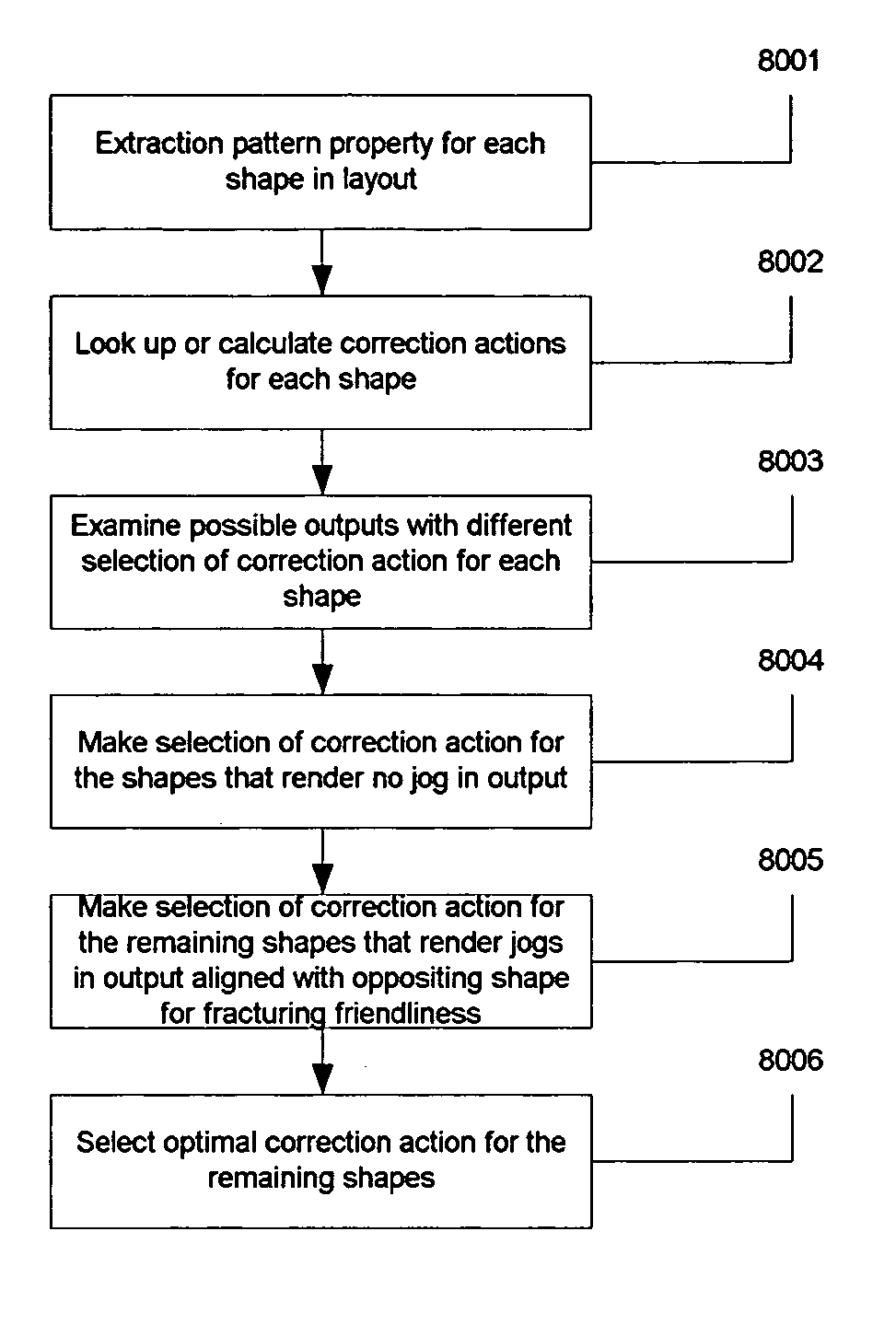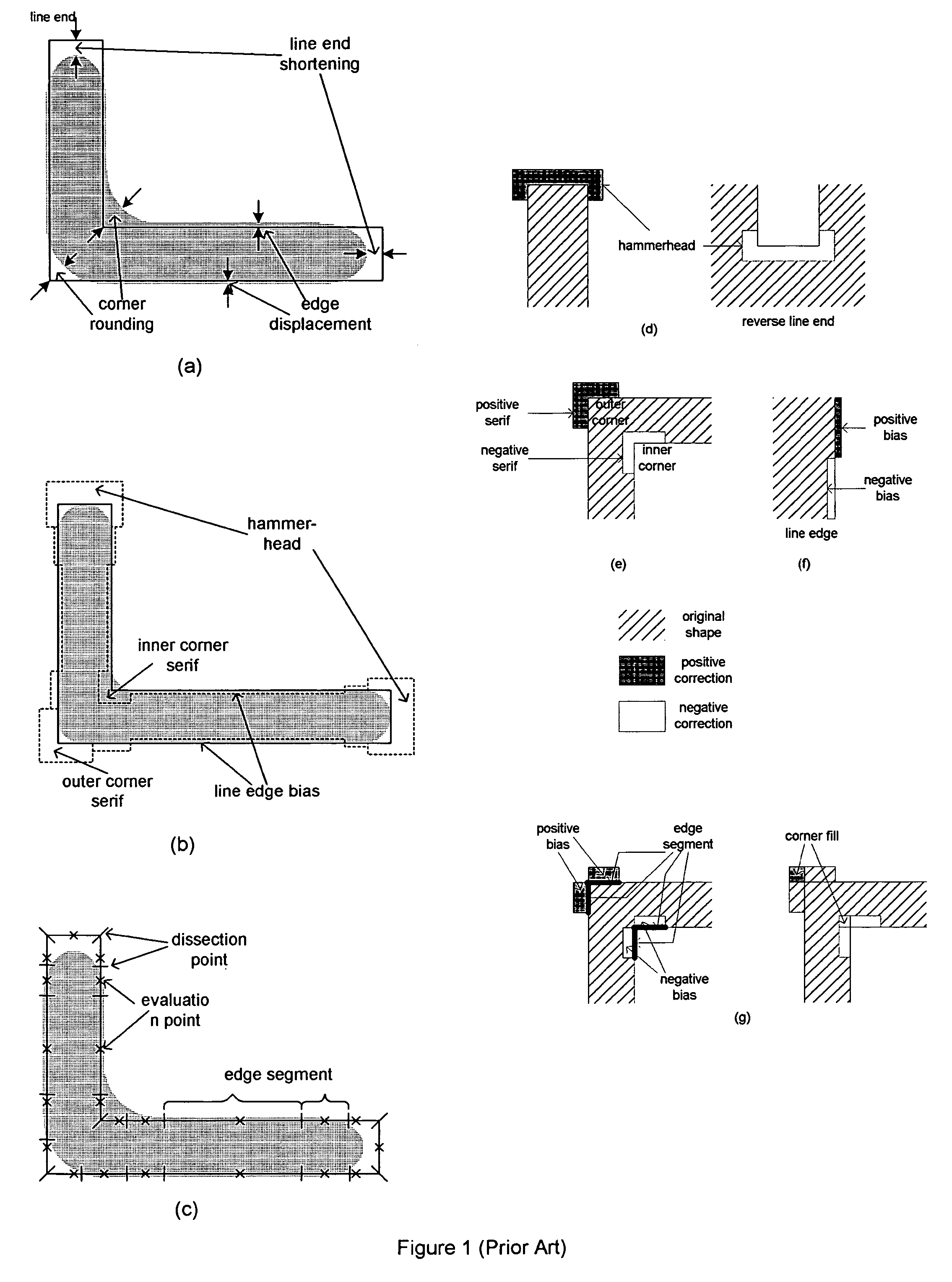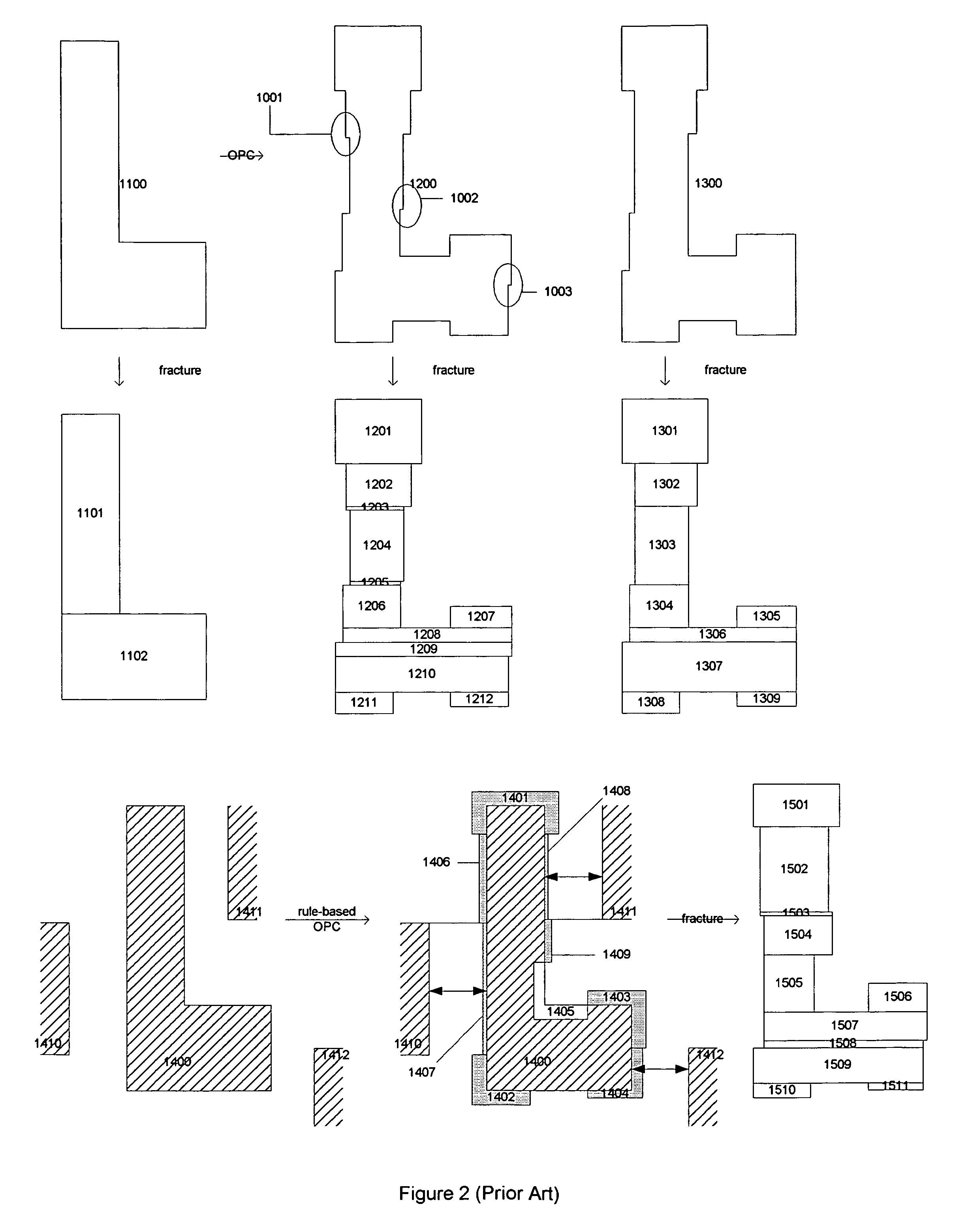Creating and applying variable bias rules in rule-based optical proximity correction for reduced complexity
a technology of optical proximity correction and variable bias, applied in the field of system and method for providing optical proximity correction for integrated circuit design layout, can solve the problems of ic design and semiconductor fabrication process being extremely complex, reducing the yield of the final semiconductor product, and complex integrated circuit (ic) complexity, etc., to achieve the effect of reducing the complexity of the op
- Summary
- Abstract
- Description
- Claims
- Application Information
AI Technical Summary
Benefits of technology
Problems solved by technology
Method used
Image
Examples
Embodiment Construction
[0031] The present invention is particularly applicable to a computer-implemented software-based IC design system for generating an IC design using rule-based optical proximity correction (OPC) to correct an IC design layout, and it is in this context that the various embodiments of the present invention will be described. It will be appreciated, however, that the IC design system and method for providing rule-based OPC for reduced complexity in accordance with the various embodiments of the present invention have greater utility, since they may be implemented in hardware or may incorporate other modules or functionality not described herein.
[0032]FIG. 4 is a block diagram illustrating an example of an IC design system 10 for providing rule-based OPC for reduced complexity in accordance with one embodiment of the present invention implemented on a personal computer 12. In particular, the personal computer 12 may include a display unit 14, which may be a cathode ray tube (CRT), a li...
PUM
 Login to View More
Login to View More Abstract
Description
Claims
Application Information
 Login to View More
Login to View More - R&D
- Intellectual Property
- Life Sciences
- Materials
- Tech Scout
- Unparalleled Data Quality
- Higher Quality Content
- 60% Fewer Hallucinations
Browse by: Latest US Patents, China's latest patents, Technical Efficacy Thesaurus, Application Domain, Technology Topic, Popular Technical Reports.
© 2025 PatSnap. All rights reserved.Legal|Privacy policy|Modern Slavery Act Transparency Statement|Sitemap|About US| Contact US: help@patsnap.com



